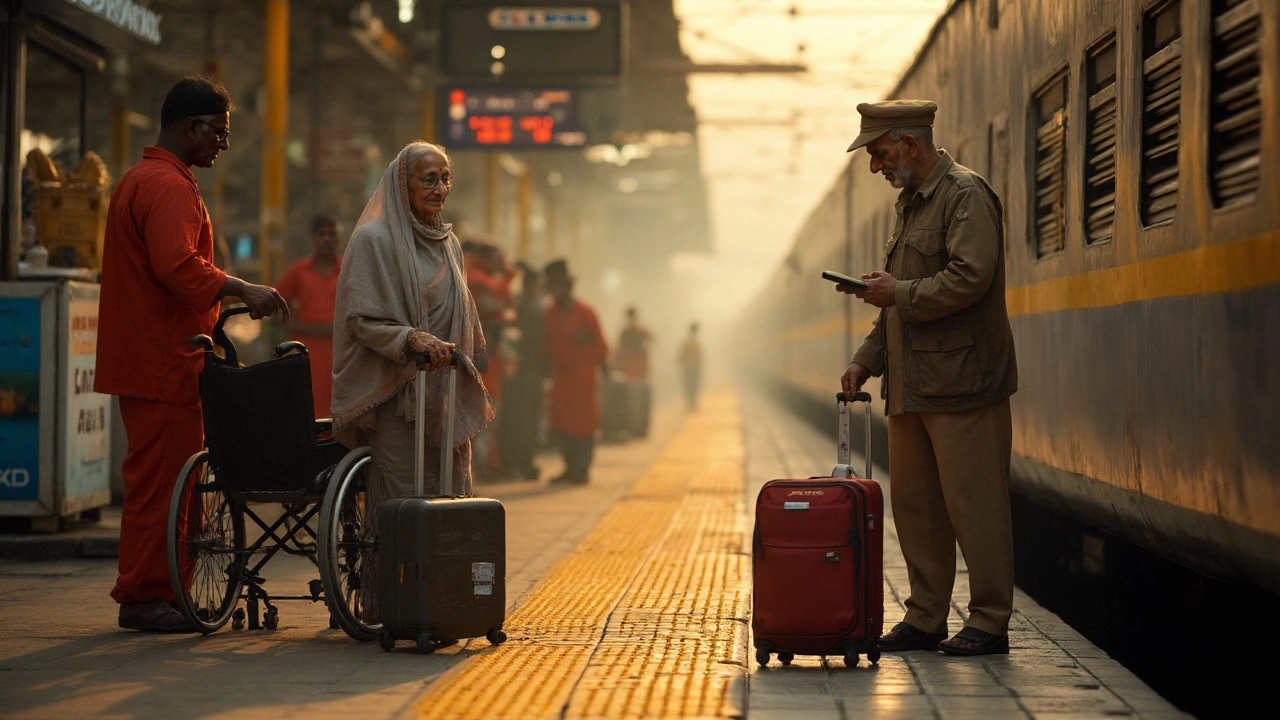
Wondering if trains suit seniors? Get a clear yes/no, safety and comfort tips, step-by-step planning, discounts by region, and a practical checklist for 2025 trips.
When planning a rail trip across India, understanding accessible trains, train services that are equipped with features like low‑floor coaches, reservation assistance, and dedicated staff to help passengers with mobility challenges. Also known as barrier‑free rail services, they aim to make long‑distance travel comfortable for everyone.
These services are part of a larger ecosystem managed by Indian Railways, the national railway operator that runs over 13,000 trains daily and is gradually retrofitting coaches and stations for universal access. The push for inclusive travel also involves wheelchair‑friendly services, ramps, tactile flooring, audio announcements, and designated berths that let wheelchair users board and alight safely. Together they form a network that supports disabled travelers, people who need assistance due to physical, visual, or hearing impairments, ensuring they can navigate the rail system with dignity.
Think of an accessible train as a moving hub that connects accessible stations and the services you rely on. A train that offers a low‑floor entry, handrails, and staff trained in assistance creates a seamless experience from the platform to your seat. The Indian Railways reservation system now flags special‑need tickets, letting you request a cabin with a wheelchair space while you book online. Once on board, the conductor and cabin crew coordinate with station staff to arrange a smooth transfer at every stop.
One practical tip: always call the rail inquiry center at least 48 hours before your departure. This gives the railway team time to allocate a coach that meets your requirements, arrange a ramp at the departure station, and confirm that the destination station has the necessary facilities. Most major junctions—like New Delhi, Mumbai Central, and Chennai Central—have tactile paths for the visually impaired and audio‑visual displays that announce train numbers and platforms.
Another crucial element is the availability of assistive devices. Many stations now provide portable wheelchairs and braille maps. If you’re traveling with a companion, you can request a “guardian seat” next to your berth, which helps staff keep an eye on your needs without crowding the cabin. The reservation codes typically include a “PNR‑A” tag for passengers needing assistance, which flags the train’s crew to expect you.
Safety is built into the design of accessible coaches. Seats have extra grab bars, emergency call buttons are placed within arm’s reach, and the toilets are spacious with handrails and low‑height sinks. These features reduce the risk of accidents and give you confidence to move around the coach. For those with hearing challenges, visual indicators—like flashing lights—signal door closings and arrivals.
While the infrastructure has improved, there are still gaps. Smaller stations may lack ramps or tactile flooring, and regional trains sometimes miss the latest coach upgrades. In those cases, opting for express or premium services like Rajdhani, Shatabdi, and Duronto usually guarantees better accessibility. These trains often have newer LHB coaches that include dedicated wheelchair bays and larger aisles.
Planning ahead also means checking the itinerary for overnight legs. Accessible berths are typically located in the upper tier of a sleeper coach, but they come with pull‑down ladders that can be a hurdle. Request a lower‑tier berth if you prefer a step‑free entry, or consider a 2‑AC compartment where the floor is level with the entrance. The reservation system indicates “lower berth” availability when you filter for special‑need tickets.
Finally, remember that the travel experience extends beyond the train itself. Many tourists combine rail journeys with local tours that are also wheelchair‑friendly. Cities like Jaipur, Udaipur, and Mysore have heritage sites offering ramps and audio guides, making it easy to continue your accessible adventure after you step off the train.
All these pieces—accessible coaches, station upgrades, reservation alerts, and supportive staff—create a network that lets you focus on the sights rather than the logistics. Below you’ll find a curated list of articles that dive deeper into safety, cost, cultural spots, and practical tips for traveling across India. Whether you’re checking the latest visa rules, scouting the safest months for a trip, or looking for budget advice, the collection is designed to help you plan an inclusive, hassle‑free journey.
Ready to explore the full range of resources? Scroll down to discover detailed guides, real‑world experiences, and expert recommendations that will make your next train adventure in India truly accessible.

Wondering if trains suit seniors? Get a clear yes/no, safety and comfort tips, step-by-step planning, discounts by region, and a practical checklist for 2025 trips.